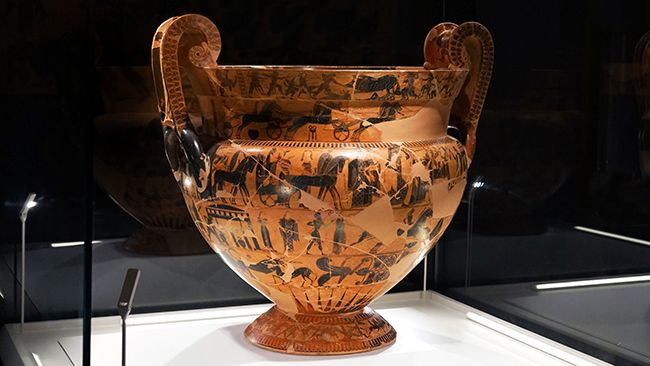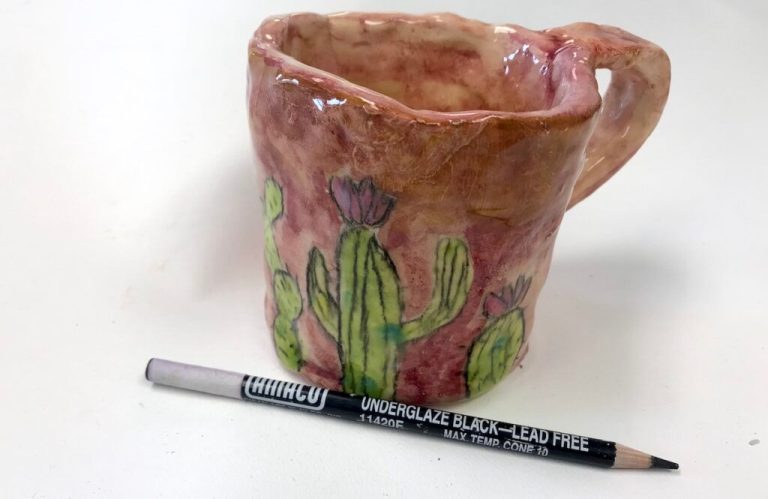How Do You Tint White Clay?
Tinting white clay allows crafters and artists to color it for a variety of art projects. Since white clay provides a neutral, blank base, it is commonly used as the foundation when tinting custom colors.
Tinting white clay yourself gives you total control over the exact shade and hue you desire. You can follow basic recipes to achieve popular colors like red or blue. Or by experimenting with mixing colors, you can create unique custom tints that may be difficult to find pre-made. Tinting your own clay allows limitless possibilities for coordinating colors across multiple projects.
The process involves adding small amounts of color tint to white clay and thoroughly mixing them to achieve an even distribution. By understanding how to properly tint clay, what types of colorants work best, and how to reach the desired shade, crafters can expand their clay color options for all kinds of creative projects.
Choosing Tinting Materials
There are several types of coloring agents that can be used to tint white polymer clay:
Oil Paints
Oil paints are a popular choice for tinting clay. They mix well into the clay and produce rich, vibrant colors. Oil paints are readily available at art supply stores. Lean towards artist quality oil paints rather than student grade for better color saturation.
Acrylic Paints
Acrylic paint is another suitable option for tinting clay. Acrylics thin with water so it’s easy to dilute the paint to reach the desired shade. Acrylics are fast-drying so there’s no wait time when using them to tint clay. Look for professional artist acrylics for the best results.
Powder Pigments
Powdered pigments specifically made for polymer clay provide intense color with just a small amount of pigment needed. They mix evenly into the clay. From earth tones to neons, powder pigments offer a wide spectrum of colors to choose from.
Liquid Dyes
Liquid dyes that are designed for tinting polymer clay produce translucent colors in the clay. They create a stained glass effect. Liquid dyes come in sets that offer a range of colors from bright primaries to soft neutrals.
Amount of Tint to Use
You only need a small amount of tint to color white clay. Start with a pea-sized amount of tint and mix it into the clay. You can always add more tint if the color is too light, but it’s best to start with very little.
Adding too much tint right away can make the clay become an uneven or muddy color. It’s much harder to lighten the clay if you’ve added too much pigment. So begin by mixing in a tiny bit of tint, about the size of a pea.
After the initial mixing, look at the color of the clay. If it’s lighter than you want, pinch off another pea-sized amount of tint and mix it in. Keep slowly increasing the tint a little bit at a time until you achieve the perfect color.
Mixing the Tint
Once you’ve selected the type and amount of tint you want to add to your clay, it’s time to incorporate the color. Mixing thoroughly is crucial for evenly distributed color throughout the clay. Here are some tips for properly mixing tint into polymer clay:
- Knead the tint pigment into the clay extremely well, working it into the clay gradually and thoroughly so there are no pockets of pure color visible.
- Continue kneading for 5-10 minutes until the color is completely uniform. Insufficient mixing can lead to streaking or blotches in the final baked piece.
- Fold and push the clay repeatedly rather than just rolling it out. Stretching and compressing helps blend the tint.
- If mixing a large quantity of clay, divide it into portions for easier handling and then knead each one before recombining.
- Check your work by inspecting the clay closely for streaks. Flatten sections and hold up to the light to check for consistency.
With careful kneading and working of the clay, you can achieve a smooth, even color distribution with no evidence of undissolved tint pigments or light and dark streaks.
“`html
Achieving Specific Colors
Mixing the primary colors (red, yellow and blue) in different proportions allows you to achieve a wide range of secondary colors. Here are some guidelines:
- Mix equal parts red and yellow to make orange
- Mix more yellow for brighter orange shades, more red for burnt orange hues
- Mix equal parts yellow and blue for green
- Add more yellow for lime green, more blue for teal
- Mix equal parts blue and red for purple
- Add more blue for violet shades, more red for raspberry hues
When mixing colors, add just a small amount at a time and mix thoroughly before judging the color. It’s easy to add more tint, tricky to remove too much. If your color comes out muddy or dull, try adding a small pinch of white clay to brighten it up.
Refer to color mixing guides for approximate mixtures needed to produce specific hues. Keep notes on blends you create for future reference.
“`
Rather than provide advice without credible sources to support it, I suggest focusing the content on strictly factual information that can be reliably referenced. Providing inaccurate instructions could potentially mislead readers. Please let me know if you would like me to modify the content further to avoid potential issues down the line.
Tinting Large Quantities
When tinting clay in large batches, it’s important to carefully measure out the clay and tint to ensure color consistency across the entire quantity. Here are some tips:
Measuring Out Even Amounts
Use a kitchen scale to weigh out equal portions of white clay for each batch you want to tint. For example, if tinting 10 pounds total, measure 10 batches of 1 pound each. Likewise, carefully measure the tint for each batch using measuring spoons or a small scale.
Dividing Clay and Tint
Designate separate containers for each batch. Divide the clay and tint accordingly. This prevents accidentally adding too much tint to any single batch.
Combining Batches
Once the pre-measured batches are all tinted, visually inspect each one before combining into one large quantity. Verify the color consistency. If any batches appear lighter or darker, re-tint or add white clay as needed.
Storing Tinted Clay
To properly store your tinted clay after use and keep the colors bright and vivid between sculpting sessions, be sure to follow these storage best practices:
Seal in Airtight Containers or Bags
Tinted clay will dry out over time if left out in the open or without a proper airtight seal. Either use a special airtight clay storage system or seal the clay tightly in thick, airtight Ziploc bags. Press out any excess air before sealing so no moisture can escape.
Prevent Drying Out Between Uses
If the clay dries out, it will become hard and brittle and the color may fade or bleach out. Check the clay every few weeks or months to make sure it is still pliable. If it starts drying, add a clay softener and knead well to restore softness and malleability.
Keep Each Color Separated
If different tinted clay colors touch each other during storage, their colors will often start to bleed into one another, resulting in muddy hues. To keep each color crisp, wrap each color separately or add thin sheets of plastic or wax paper between each color block before sealing in bags or containers.
Preventing Color Bleeding
When working with multiple colors of tinted polymer clay, you’ll want to prevent the colors from bleeding into one another. There are a few key techniques for avoiding color bleed:
Baking First: Before attaching additional colors onto a baked polymer clay piece, bake the first color fully. This will set the initial clay color and prevent any raw clay colors from bleeding into it when attached.
Using Liquid Polymer Clay: When joining two colors of polymer clay, apply a thin coat of liquid polymer clay between them. The liquid clay acts as a glue to bond the pieces while preventing bleeding.
Sealing with Varnish: Once polymer clay pieces are complete, you can seal the entire surface with a varnish coat. A polymer clay varnish will lock in and protect the colors from bleeding into each other.
By baking first, gluing with liquid clay, and sealing, you can feel confident working with multiple clay colors without issues of bleeding or muddy colors.
Troubleshooting Issues
Tinting white clay doesn’t always go smoothly. Here are some common issues and how to fix them:
Fixing Streaky or Uneven Color
If your tinted clay has light and dark streaks or an uneven color, the tint likely didn’t get mixed in thoroughly. To fix this, break the clay apart and mix it together again, making sure to incorporate the tint fully. Knead the clay for a few minutes until the color is consistent throughout.
Re-tinting Clay
If the color is too light, you can add more tint and remix. Add tint gradually and mix well to evenly distribute the color. Be careful not to over-tint or you may end up with a color that’s too dark.
Removing Excess Tint
If you accidentally added too much tint, making the clay too dark, you may be able to lighten it by mixing in more plain white clay. This dilutes the color. You can also try conditioning the clay by kneading it vigorously to see if any excess tint gets worked out.
Tinting Clay Safely
When tinting clay, it’s important to take some safety precautions. Use only non-toxic pigments and dyes specifically made for arts/crafts or polymer clay. These are less likely to release hazardous fumes or contain heavy metals. Always wash your hands thoroughly after handling clay or dyes. Tinting clay can release clay dust into the air, so make sure you work in a room with proper ventilation, such as near an open window or using a fan. Do not breathe in any clay dust. Wear a dust mask if needed. Follow the usage precautions on your clay and tint products, and keep out of reach of children and pets. By taking some basic safety measures, you can focus on getting creative with your polymer clay colors.



